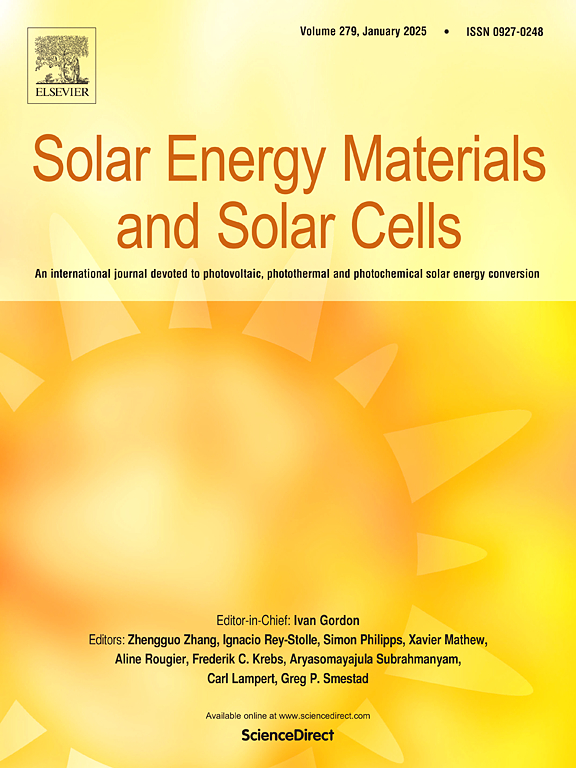A versatile optical-electrical-thermal simulation framework for photovoltaic devices integrating ray tracing and conversion losses
IF 6.3
2区 材料科学
Q2 ENERGY & FUELS
引用次数: 0
Abstract
Investigating the photoelectrical conversion principles of photovoltaic devices in-depth for efficiency improvement has always been a subject under intense heat discussions. Numerical simulation, serving as a rapid, cost-efficient, and effective method, holds the potential to disclose the entire intricate physical process. Numerous diverse mathematical models have been proposed in the literature for investigation, while the actual circumstances are highly complicated, and comprehensive analysis remains arduously challenging due to various impediments. Herein, we present a versatile simulation framework for photovoltaic (PV) devices. By integrating Monte Carlo ray tracing, equivalent circuit and layered thermal resistance models, it aims to realize optical-electrical-thermal coupling simulation, and meanwhile the conversion loss mechanism is also considered, facilitating an in-depth investigation into the comprehensive performances of PV devices. The findings of this study reveal that, for a typical HJT PV module, the photogenerated current density can attain 32.97 mA/cm2 under normal incidence, and the conversion efficiency peaks at 23.8 % with a fill factor of 82.2 % under standard test condition (STC). Moreover, when the module operates under nominal operating cell temperature (NOCT) conditions, the operating temperature will ascend to 41.1 °C and the efficiency will decline to 21.75 %. The module absorbs 683.02 W/m2 incident energy with one-third contributed by the inactive materials, and about 64 % of the total incident irradiance is converted into heat, thus only approximately a quarter of the total absorbed energy is the effective output (174 W/m2), with the thermalization and angle-mismatch being the two dominant energy losses in the photoelectrical conversion process, accounting for 23 % and 10.8 % respectively.
求助全文
约1分钟内获得全文
求助全文
来源期刊

Solar Energy Materials and Solar Cells
工程技术-材料科学:综合
CiteScore
12.60
自引率
11.60%
发文量
513
审稿时长
47 days
期刊介绍:
Solar Energy Materials & Solar Cells is intended as a vehicle for the dissemination of research results on materials science and technology related to photovoltaic, photothermal and photoelectrochemical solar energy conversion. Materials science is taken in the broadest possible sense and encompasses physics, chemistry, optics, materials fabrication and analysis for all types of materials.
 求助内容:
求助内容: 应助结果提醒方式:
应助结果提醒方式:


